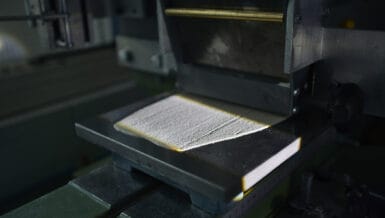Enhancing Material Performance
One of the primary goals of powder particle engineering is to improve the performance of materials by tailoring their properties. By manipulating particle size, engineers can influence characteristics such as flowability, solubility, and surface area. For instance, in the pharmaceutical industry, particle engineering allows for the design of drug formulations with controlled release rates, improved bioavailability, and targeted drug delivery. Similarly, in the field of cosmetics, engineered powder particles enable the creation of products with enhanced texture, better adhesion, and superior skin feel.

Particle engineering plays a crucial role in the food processing industry. By manipulating the size, shape, and composition of particles, it enables precise control over product properties like taste, texture, stability, and nutrient delivery. This innovation enhances food quality, extends shelf life, improves processing efficiency, and facilitates the development of functional foods, catering to evolving consumer demands.
Controlling Particle Shape
Particle shape plays a crucial role in determining material behavior and performance. Powder particle engineering techniques enable precise control over particle morphology, allowing for the creation of particles with desired shapes such as spheres, rods, fibers, and flakes. This control over particle shape opens up possibilities for optimizing properties like packing density, surface area, and mechanical strength. For example, in the field of catalysis, engineered particles with specific shapes and surface structures exhibit enhanced activity and selectivity, leading to more efficient chemical processes.
Customizing Composition
Powder particle engineering also facilitates the customization of particle composition to meet specific requirements. By incorporating additives or functionalizing surfaces, engineers can enhance properties such as conductivity, magnetism, and stability. This capability has immense implications for industries such as electronics, where tailored particles enable the development of high-performance materials for energy storage, printed electronics, and electronic displays. Moreover, in the automotive sector, engineered powder particles contribute to the development of lightweight materials with improved strength, corrosion resistance, and thermal stability.
Manufacturing Advancements
The advancements in powder particle engineering have not only revolutionized material design but also transformed manufacturing processes. Techniques like spray drying, precipitation, and milling have been refined to produce particles with precise characteristics, enabling efficient and scalable production. Additionally, technologies like 3D printing have been integrated with powder particle engineering, enabling the fabrication of complex structures with tailored properties, thus opening up new possibilities for customized products and rapid prototyping.
Future Perspectives
The field of powder particle engineering continues to evolve rapidly, promising exciting advancements in the years to come. As researchers delve deeper into the fundamental understanding of particle behavior, novel techniques for particle synthesis and manipulation are being developed. The integration of artificial intelligence and machine learning in powder particle engineering holds the potential to accelerate material discovery and optimization, revolutionizing various industries.
Conclusion
Powder particle engineering is reshaping the landscape of material science and manufacturing. With its ability to manipulate particle size, shape, and composition, this field offers unprecedented control over material properties, leading to enhanced performance and functionality. From pharmaceuticals to electronics, powder particle engineering is driving innovation and unlocking new possibilities for the future in a myriad of process industry markets. As research and development efforts continue, we can expect this fascinating discipline to shape the materials of tomorrow.

















































